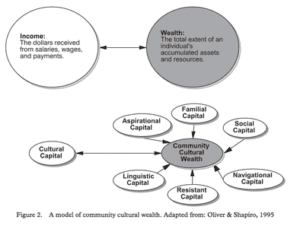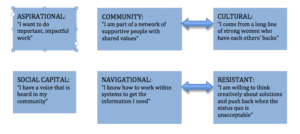Building Adolescent Self-Worth: Recognizing Alternate Forms of Wealth
There is a great deal of emphasis placed on comparison and measuring up during the adolescent years, and if students are not coming from similar backgrounds with the same level of support, it can be hard to feel confident in your ability to add value. When we talk about diversity and equity in schools, we are often looking at the resources students and their families have in terms of economic wealth – is there enough food at home, enough money to afford extras like tutors and testing and uniforms and sporting activities, flexibility with regard to parents and caregivers to support students where and how they need it. These are vital questions, and if you’re a student who doesn’t have a great deal of financial security, it can feel as though you don’t have the same kinds of opportunities as other students who do.
Dr. Tara Yosso developed something she calls the Cultural Wealth Model as she thought about helping students who historically don’t have access to post-secondary education. It is a way for students to re-frame their thoughts about the strengths they can draw on as they apply for jobs or college and it’s a powerful acknowledgment that there are many skills and abilities that have nothing to do with money that are incredibly valuable nonetheless.
I first learned about this model last weekend when I attended a conference on social-emotional learning and equity and I believe that this has the potential to impact all students and encourage them to think about the things they may take for granted that they can instead use as assets. I’m currently designing a lesson wherein students can make their own “alternative wealth maps,” even adding other categories beyond the ones Dr. Yosso talks about. I practiced by making my own and I’ve included it below as an example. The double arrows indicate the areas that work together to amplify wealth. I’d love to hear your thoughts on this model and how you might apply it to remind adolescents that they have a lot to offer to their communities.



